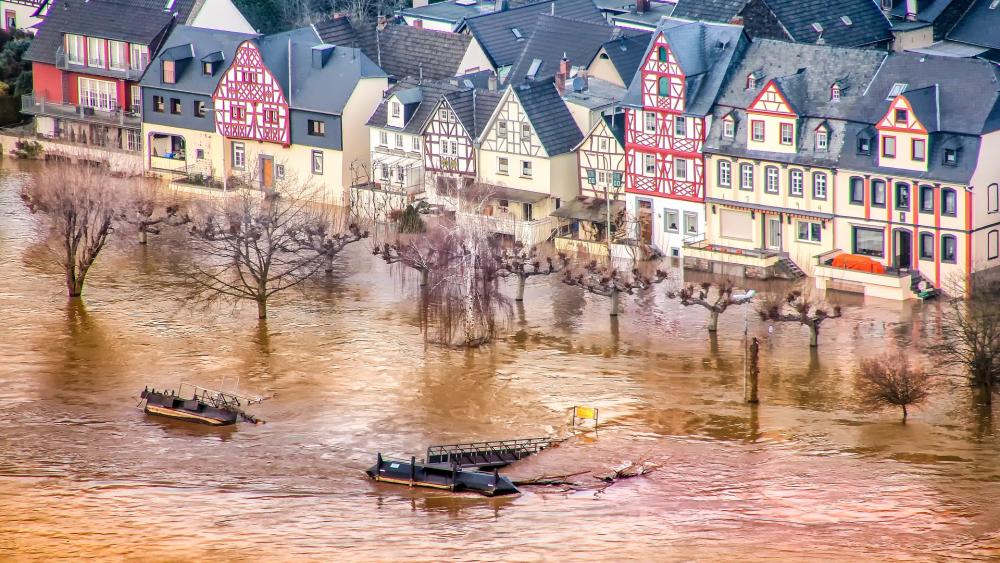
Floods are among the most frequent and severe of all natural hazards worldwide (here is a picture of the floods on the Rhine River in 2018). | Photo by analogicus on Pixabay
As a result of climate change, the increase in sealed and densified areas, river regulation and develeped areas in floodplains, the risks, frequency and consequences of flood events have increased significantly in recent decades. Yet floods are actually natural events that have created unique biodiversity and resilient ecosystems in our river landscapes over thousands of years. This is pointed out by the authors of a new policy brief entitled Naturbasierte Lösungen verbessern Hochwasserschutz und Biodiversität (Nature-based solutions improve flood protection and biodiversity).
"A predominantly technically oriented and often unsustainable flood control is increasingly facing its limits, because it only shifts the risk locally and harms the environment," said IGB researcher Sonja Jähnig. A comprehensive and integrated risk management of land and water is therefore urgently needed, which would give the rivers and their floodplains more space, increase the natural retention capacity of the landscape and thus also create near-natural habitats for more biodiversity.
The team of researchers from Senckenberg, IGB, GFZ Helmholtz Zentrum Potsdam and the Universities of Duisburg-Essen, Kiel, Frankfurt, Osnabrück and Aachen Technical University therefore proposes combined flood control solutions. Instead of relying purely on constructed measures such as dykes or artificial retention basins, so-called nature-based solutions (NbS) should be used to a greater extent. By this, the researchers mean restoration of rivers, floodplains, wetlands, peatlands and forests, as well as unsealing of surfaces, more nature-friendly agriculture and urban development. Such measures can increase water retention in the landscape and thus also increase resilience to flood events. "Increasing the proportion of forest, for example, can help to mitigate at least some floods," confirms co-author Dörthe Tetzlaff from IGB.
In addition to using nature-based solutions, the scientists also recommend increasing the designation of floodplains when increasing the area of protected areas from the current 10 to 30 per cent, as envisaged in the EU Biodiversity Strategy for 2030. This would promote biodiversity and protect people alike.







